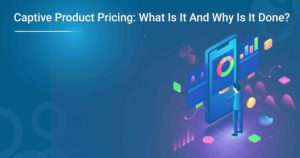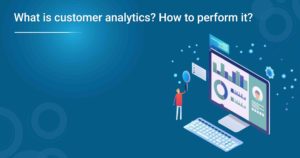Product Line Pricing: A product line is a bunch of closely related products and often marketed together. A product line can include physically similar products, such as different sizes or colours of the same product.
Product lines can also include different products that serve the same purpose or target the same customer. For example, a smartphone company might have a product line that includes phones with other operating systems, such as Android and iOS.
Pricing strategies for product lines vary depending on the products and the company’s goals. Some companies might charge more for specific products in their line because they are considered better quality. Other companies might price all of their products in the same range to make them more accessible to an extensive range of customers.
The fundamentals of product lines are essential for anyone involved in marketing or selling products. By understanding how product lines work, you can ensure that your company offers its customers the right mix of products at prices that will help you achieve your business goals.
What Is Product Line Pricing?
Product line pricing is setting prices for a product line or products within a product line. This process can be done in different ways, but the general method is to use cost-plus pricing. With cost-plus pricing, the price of a product is set by adding a margin to the total cost of the product. The margin is typically set as a percentage of the total cost and can vary depending on the product and the market.
Several factors must be considered when setting prices using cost-plus pricing. The first is the cost of producing the product. It includes all direct and indirect costs associated with manufacturing and marketing the product. The second factor is the desired profit margin. The desired profit margin is the company’s profit on each product sale. The third factor is market conditions. Market conditions include competitor prices, customer demand, and overall economic conditions.
Cost-plus pricing is just one method that can be used to set prices for a product line. Other methods include value-based pricing and competitive pricing. In value-based pricing, the price is set based on the product’s perceived value to customers. In competitive pricing, prices are set based on competitors’ charges for similar products.
The choice of pricing method will depend on many factors, including the nature of the products in question, market conditions, and company objectives. Product line pricing can be complex, but it is essential to running a successful business.
What Are The Benefits of Product Line Pricing?
Product line pricing is defined as a pricing strategy that companies use to price products in a way that reflects the value of the product line. Companies with multiple products in their lineup often use this pricing strategy, as it allows them to price each product based on its perceived value and contribution to the overall product line.
There are several benefits to using product line pricing as a pricing strategy, including:
- It allows companies to reflect the true value of their products: By pricing products based on their contribution to the overall product line, companies can more accurately reflect the actual value of each product. This can help to attract customers who are willing to pay for quality and also helps to discourage customers from purchasing lower-quality knock-offs.
- It encourages customer loyalty: When customers see that they are getting a good deal on a quality product, they are more likely to be loyal to that brand or company. This loyalty can lead to Repeat business and positive word-of-mouth marketing for the company.
- It helps companies better manage inventory: By understanding how much each product in the lineup contributes to the overall sales revenue, companies can make better decisions about which products to keep in stock and which ones to discontinue. It can help save money on inventory costs and improve turnover rates.
- It supports new product development: Companies can reinvest that money into developing new products by knowing how much revenue each product brings in. It can help to create a virtuous cycle of product development and sales that fuels growth for the company.
- It can be used to price products strategically: Companies can use product line pricing to their advantage by strategically setting prices for different products in the lineup. For example, a company might price its flagship product higher than the rest of the lineup to offset the research and development cost. Or, a company might price its entry-level product lower than the competition to attract new customers.
- It can help companies better understand customer behaviour: Companies can gain valuable insights into customer behaviour by analysing how customers react to different product prices in the lineup. This information can be used to make strategic pricing, promotions, and product development decisions.
- It can help companies respond to changes in the market: Product line pricing gives companies the flexibility to adjust prices quickly in response to changes in the market. For example, if a competitor launches a new product priced lower than your own, you can quickly adjust your prices downwards to stay competitive.
- It can be used in conjunction with other pricing strategies: Product line pricing is not an exclusive pricing strategy; it can be used along with with other strategies, such as bundling, to create custom pricing plans that fit the needs of your company and your customers.
What Are Product Line Pricing Strategies?
 Domino Effect Pricing:
Domino Effect Pricing:
Domino effect pricing is a product line pricing strategy where the price of one product in a series is increased or decreased based on the price of another product in the same series. This pricing can be used to stimulate consumers to purchase higher-priced items in a product line by making them appear more affordable compared to lower-priced items. Additionally, domino effect pricing can discourage consumers from purchasing lower-priced items by making them appear more expensive than higher-priced items.
When done correctly, domino effect pricing can be an effective way to enhance your sales and profits. However, it is essential to understand that this pricing strategy can also backfire if not carefully planned and executed. Several factors must be considered when implementing domino effect pricing, such as the elasticity of demand for all products in the series, the price sensitivity of consumers, and the company’s overall goals.
Captive & Skimming Pricing
In business, the term “product line” refers to a group of closely related products that are often marketed together. A product line pricing strategy is a way of pricing products to maximise revenue and profit for the company.
There are two main types of product line pricing strategies: captive pricing and skimming. Captive pricing is when a company prices its products to capture the most value from customers. It is often done by setting high prices for products in high demand and low prices for those in low demand. Skimming is when a company prices its products to maximise profits by setting high prices for products in high demand and low prices for products in low demand.
Both captive pricing and skimming strategies have their pros and cons. Captive pricing can help companies capture more value from customers, but it can also alienate some customers who may feel like they are being overcharged. Skimming can help companies maximise profits, but it can also lead to lower sales volumes if customers feel like they are being charged too much.
The best product line pricing strategy will differ in different companies, depending on factors such as the type of products sold, customer demand quality, and the business’s overall objectives. Companies should generally consider captive pricing and skimming when developing their product line pricing strategy.
Also Read: What Is Product Planning And How Is It Done?
Bundle Pricing
Bundle pricing is when companies offer two or more products for sale together at a discounted price. This often encourages customers to buy multiple items from the company’s product line. Bundle pricing can also be used as a way to clear out old inventory or promote new products.
There are two main types of bundle pricing: pure bundling and mixed bundling. Pure bundling is when all of the products in the bundle must be purchased together and cannot be bought separately. Mixed bundling is when some of the products in the bundle can be bought independently, and some must be bought together.
Bundle pricing is a common pricing strategy many companies use, especially in the retail industry. Some examples of companies that use bundle pricing include Best Buy, Apple, and Microsoft.
Leader Pricing
Leader pricing is a product line pricing strategy in which the price of one or more products in a product line is set below the prices of competing products. The goal of leader pricing is to attract customers who are price sensitive and to entice them to purchase other, more profitable items in the product line.
When using leader pricing, it is essential to consider the product line’s overall profitability and set prices that will not erode margins on other items in the line. In addition, because leader prices are often below cost, careful consideration must be given to how long the sale can last without adversely affecting customer perceptions or hurting the brand.
Bait Pricing
Bait pricing is one pricing strategy that can be used within a product line pricing strategy. Bait pricing involves offering a low price on more than one product to lure customers into the store or website, hoping that they will then purchase other, higher-priced items. This strategy can be effective in getting customers interested in a product line, but it is essential to make sure that the bait prices are not so low that they are seen as unrealistic or misleading.
One benefit of bait pricing is that it can help to draw in new customers who might not have otherwise considered your company. This can be especially beneficial if you are introducing a new product or trying to enter a new market. If you offer a low price on a popular item, you may be able to lure customers away from the competition.
Another benefit of bait pricing is that it can help increase sales of complementary products. For example, if you offer a discounted printer, you may also see an uptick in printer ink and paper sales. Customers who take advantage of your bait pricing may also be more likely to return and make additional purchases.
Examples of Product Line Of Famous Companies
When it comes to product lines, some of the most famous companies in the world have got it figured out. From Coca-Cola to Nike, these businesses have built entire empires off of their product lines. Let’s check out some examples of successful product lines from famous companies.

Coca-Cola: One of the most popular product lines in the world belongs to Coca-Cola. This company offers a variety of beverages, including sodas, juices, and water. Coca-Cola has successfully marketed its products to people of all ages and cultures, which has helped them become one of the global brands the world.
Nike: Another example of a successful product line comes from the sports apparel company Nike. Nike offers different products, including shoes, clothing, and equipment for various sports. Nike’s products are used by athletes at all levels, from amateur to professional. This company has also successfully marketed its products to people who are not athletes but still enjoy an active lifestyle.
Apple: Apple is known for its innovative and stylish products, which have made it one of the most successful companies in the world. Apple’s product line includes various electronic devices, such as computers, smartphones, and tablets. Apple has also developed its operating system, called iOS, which is used on its devices.
Samsung: Samsung is another electronics company that has a successful product line. Samsung offers a wide range of products, including smartphones, TVs, and home appliances. Samsung has successfully marketed its products to people of all ages and cultures.
When it comes to developing a successful product line, it is essential to find a niche market and offer products that meet the needs of that market. These are only a few of the many successful product lines that are out there.
How To Create a PL Pricing?
Product line pricing is the process of setting prices for a product line. A few different strategies can be used when it comes to product line pricing, and the right strategy will depend on the products in the line, the market, and the business goals.
One common product line pricing strategy is to price each product at a different price point. For example, a clothing company might have a budget line and a luxury line, with each item in the budget line being priced lower than its counterpart in the luxury line. It allows businesses to appeal to different customers with different budgets.
Another common strategy is to price all products in the same price range. It can be effective if the products in the line are similar enough that customers will see them as interchangeable. For example, if a company sells different flavours of coffee, they might price all of their coffees at $10 per bag.
The key to successful product line pricing is understanding the customer base and what they can pay for your products. Once you have this information, you can choose a pricing strategy that meets your business goals.
Also Read: What Are The Stages And Examples Of A Product Lifecycle?
There are some steps to create product line pricing:
- Determine your overall cost structure. It includes all fixed and variable costs associated with producing your product line.
- Analyze your competitors’ prices. It will give you an idea of what the market has planned for similar products.
- Choose a pricing strategy that meets your business goals. There are several common strategies, such as skimming, penetration, and value-based pricing.
- Set prices for each product in your line based on the chosen strategy. Keep an eye on competitor prices and adjust accordingly over time.
- Test and adjust your prices as needed. This is an important step to ensure that you make the most profit possible.
Conclusion
Product line pricing is setting prices for each product in a product line. It is the most important component of determining the success of a brand. Different strategies can be used to price products in a product line, and the choice of method depends on the company’s objectives. The most common pricing strategies used for product lines are keystone markup, skimming, and penetration. To choose the right pricing strategy, companies need to understand the fundamentals of pricing, including cost structure, demand, elasticity, and competition.
Product managers are responsible for the planning, development and execution of a company’s product line. They work with cross-functional teams to bring products to market and ensure that they meet customer needs. A successful product manager has strong strategic skills, can think creatively, and has a track record of delivering successful products.
Our Advanced Executive Certificate in Product Management will give you the tools to develop and execute a winning product line strategy. You’ll learn to assess customer needs, identify market opportunities, create value propositions, and develop go-to-market plans. You’ll also gain an understanding of the financial aspects of product management and how to develop a business case for your product line. Check out the course now.
More Information:
How To Become A Better Product Manager: Top 10 Tips
Brand Management v/s Product Management: Know Key Differences






_1668670867.jpg)





















